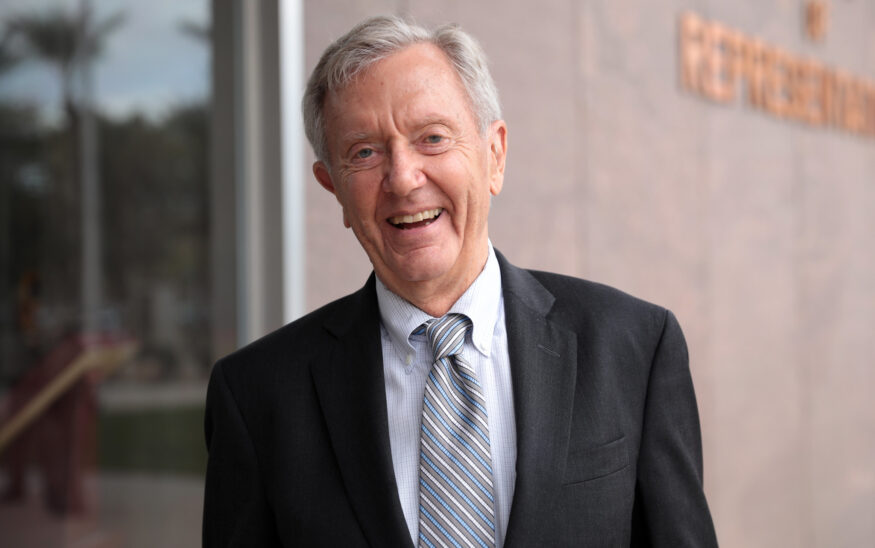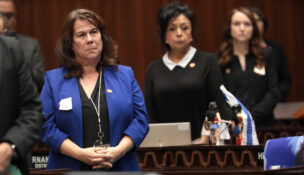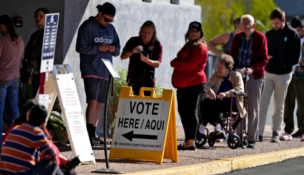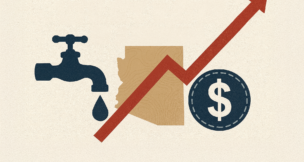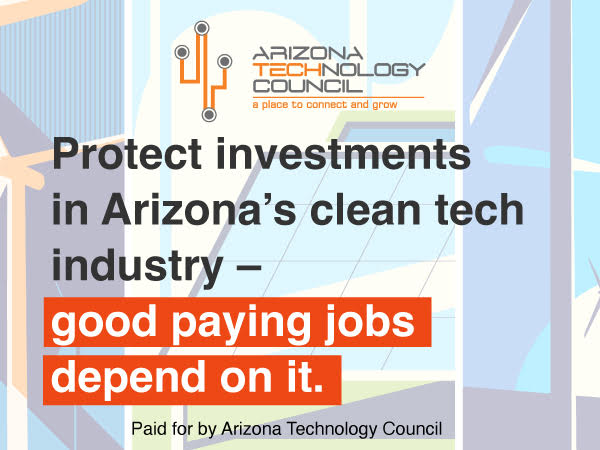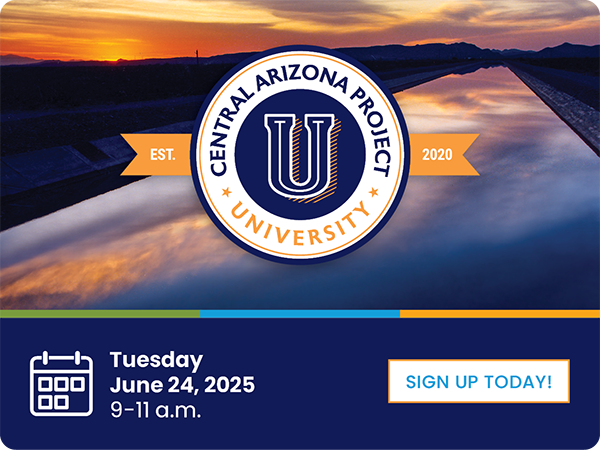Bruce Babbitt: The ‘Godfather’ of Arizona water
Jamar Younger Arizona Capitol Times//November 2, 2025//
Bruce Babbitt: The ‘Godfather’ of Arizona water
Jamar Younger Arizona Capitol Times//November 2, 2025//
Former Arizona Governor and U.S. Secretary of the Interior Bruce Babbitt has devoted nearly all of his public service career to tackling water and environmental issues in Arizona and throughout the country.
As a Democratic governor, Babbitt worked with Republican lawmakers and other officials to craft the influential Groundwater Management Act of 1980, which continues to serve as the state’s only groundwater management regulatory framework.
Babbitt has also helped shape policies for the Colorado River and continues to serve as an influential voice during negotiations between the Upper Basin and Lower Basin states.
He also lobbied the state Legislature to pass the Ag-to-Urban legislation last session.
Sen. Lela Alston, D-Phoenix, referred to Babbitt as the “godfather watching over water in Arizona” during floor testimony for the measure in June.
Babbitt reflected on some of his notable policies and provided his input on the Colorado River negotiations during an interview with the Arizona Capitol Times.
Answers have been lightly edited for clarity.
Why have you remained so involved with water issues?
When I left Arizona to become secretary of the interior, that made me the water master. That’s an actual phrase, water master of the lower Colorado River. And that meant that I was directly involved in all this stuff for almost all of my public life. And you just get so deeply involved. When I left the (Department of the Interior), people continued to seek my advice, and I continued my interest, and I began speaking and writing and advocating.
Most recently, Gov. (Katie) Hobbs asked me during the debate over Ag-to-Urban last year … she asked me to help lobby the Legislature. So all of a sudden, I am back talking to legislators. A question many people ask (is) ‘Bruce, who’s your client? You’re a lawyer, or do you represent somebody in some corporation or some faction?’ My only client is Bruce Babbitt. I don’t represent anybody. I’m in this because I care and I believe I have something to offer, and I like doing it. I’ve got a lot of friends all over Arizona, Colorado. I’ve worked in all seven states during my time at the Interior. And it’s so interesting, and I like it so much, I think I have something to offer.
How did the groundwater management act pave the way for groundwater policy in Arizona and across the country?
Back in 1980, there was a real crisis in Arizona from groundwater overdrafting and we decided to enact an entirely new approach. What made that possible was that I was the governor, and we had good leadership in the Arizona Legislature. The president of the Senate and the speaker of the House were both Republicans. The three of us got along very well, and we simply went behind closed doors and negotiated for six months in detail about a comprehensive statute which has governed groundwater until this day.
How were you and other lawmakers able to come to a compromise?
We listened carefully to each other. We invited representatives from agriculture, the mining industry and the cities to join in the negotiations, and it was a very positive atmosphere because we all listened carefully to each other and were willing to make compromises.
Do you feel there’s anything that could have been done differently in crafting the Groundwater Management Act?
Well, that was 45 years ago, and in that time, we have seen the need for some changes. The most important one, I think, is to have a program for the rural areas of Arizona. In 1980, the Groundwater Management Act applied mostly to Maricopa, Pinal and Pima counties, with some exceptions, but it was and is basically an urban water management act for central Arizona. It’s now time to reach out and attempt to compromise, and enact a statute for the rest of the state.
At the time, why was the Groundwater Management Act mostly focused on urban areas?
That’s because of the huge demand from the urban populations, and it’s where most of the agriculture was. So it was the immediate problem.
How has everything changed for rural areas in the past 45 years in regards to water usage?
I would say that the biggest change has been the presence of out-of-state companies coming in and establishing huge farms based on groundwater. You can see that most dramatically in Mohave County, the Kingman area and in the Willcox basin in southern Arizona.
What advice would you offer to lawmakers who are trying to pass another act tailored toward rural areas?
There are a number of different bills that have been introduced and debated. To some degree, there are strong points in all of the bills. They differ to some degree in the amount of mandatory conservation, and to some degree in the composition of the local management councils. What we need in the upcoming session is a spirit of compromise. It’s a kind of compromise that we had in the last Legislature when they passed the Ag-to-Urban bill. And my hope and expectation is that with a little more effort and careful attention to differing points of view, it should be possible to find a compromise.
What was your impression of the groundwater management proposals that were introduced last session?
Well, there are a number of different ones. They all have some strong points. I would say that one of the major differences has been how much conservation on what timeline, how much is it necessary to mandate the reduction of groundwater use (and) in what quantity there are differences that I think are susceptible to compromise.
What do you think are the biggest obstacles that lawmakers face in trying to get another groundwater management act passed?
I think the main differences relate to the composition of the local management councils and the authority that they would have to adopt management tools and management plans with the participation of the Department of Water Resources. There are differing provisions in the bills. The second major difference, as I see it, is conservation. How stringent should the water reduction proposal amount and deadlines be laid out? Those are, I think, the major differences.
What has been the biggest hindrance with coming to an agreement with the Colorado River negotiations?
The problem is the impasse between the Upper Basin states of New Mexico, Colorado, Utah and Wyoming and the Lower Basin states, which is Arizona, California, Nevada. The Lower Basin states, led by Arizona, have put forward a plan for how to handle drought, which means reducing the amounts of water that are allocated to the water users in the Lower Basin. Under the leadership of Arizona, the Lower Basin states have put forward a very clear, detailed plan that makes substantial concessions in how much water use must be reduced. The basic issue in all of this is there’s not enough water to go around. Big cuts are going to have to be made across the entire basin. The issue is how do you share those reductions? Now, the Upper Basin, particularly Colorado, have responded by saying, “It’s not our intention to offer reductions,” and there’s been no serious offer made by the Upper Basin in response to Arizona in the Lower Basin saying, “Here’s a proposal for reducing usage by the Lower Basin states.”
What will it take for the Upper Basin states and Lower Basin states to actually reach an agreement?
The deadline for agreement is coming up fast. That is, it’s next year. Now the states … have been unable to agree, and there’s not much indication so far that they’re going to make any more progress. That means that the Bureau of Reclamation, that is the Interior Department, now must step in and conduct the negotiations towards conclusion. The first step in that process is going to occur in November. In November, the Department of Interior is going to issue a number of alternative proposals. That’s part of the environmental process that must take place over the next year before the existing regulations expire. The existing regulations expire at this time next year so there has to be an agreement, and it looks like the states are unable. They’ve been talking for years now. That means that the Interior Department must now step in and begin to lead the process. The opening of that process is going to be in November when the department is going to lay out alternative ways of coming to a conclusion. It’s going to be controversial, obviously. But the important thing is that the federal government, in the form of the Interior Department, must now take a strong leadership role.

